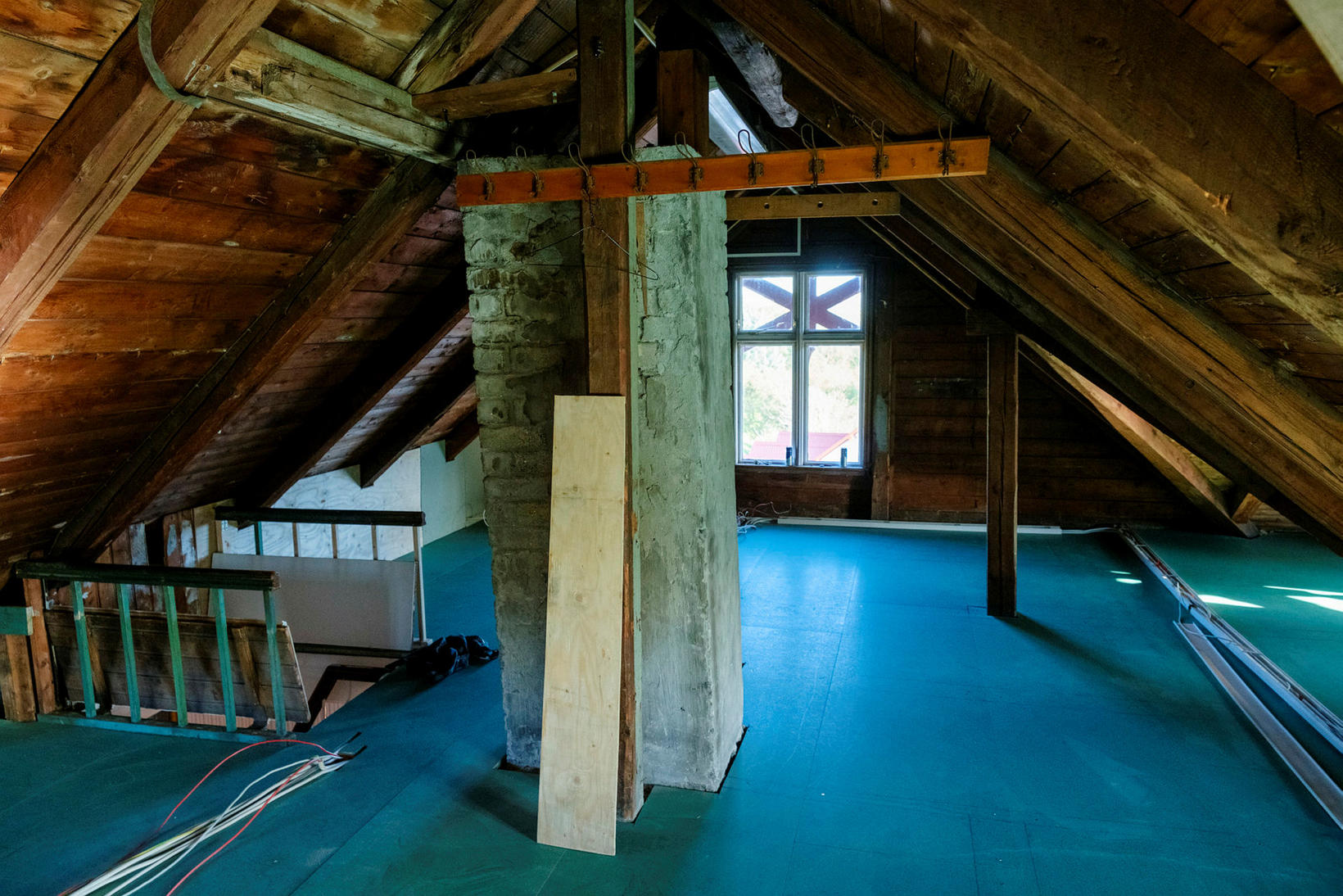A skull is found in the Ministerial House
The two bones put together by the bone specialist of the National Museum of Iceland. Photo/The National Museum of Iceland
Workers carrying out renovations at the Ministerial Building on Tjarnargata found fragments of a skull beneath the floorboards of the building's top floor last week.
Not much is known about how the bones got there, but the National Museum’s bone specialist believes they are likely to be from Hólarvallakirkja cemetery on Suðurgata.
They may have been dug up during some work when the house was built in 1906, and someone decided to put them in the house rather than have them re-buried.
The top floor under the roof where the bones were found, is not been used much, but Jakobsdóttir says that it is not unheard of bones being found in houses in Iceland. mbl.is/Kristinn Magnússon
Bones from an adult
According to Dr. Joe W. Walser, bone specialist at the
National Museum of Iceland
, the bones are of an adult at least 25 years old are, and most likely of a female, although it is difficult to determine definitively. Carbon dating is being done on a sample of bone and the results should be available in a few weeks.
Walser says that it is not impossible to extract genetic material from the bones even though the information usually used is derived from such teeth. But he doubts that such information will give any indication of whose bones these are.
Iceland's Prime Minister, Katrín Jakobsdóttir and a crime novelist at the scene where the bones were found. Kristinn Magnússon
The Most Mysterious Case
Prime Minister Katrín Jakobsdóttir tells Morgunblaðið that the case is the most mysterious and although some thoughts have been sparked by her.
“There is no suspicion of criminal activity, so even if the criminal author thinks of things, there is no evidence of foul play,” says Jakobsdóttir, mentioning that there is no evidence of injury, illness or the like on the bones.
“This is undeniably a very appealing story, ” she says smiling. “But my primary duty as a minister is to have the age and background checked.” She says that there are a number of possibilities, as the house has been a long time in Tjarnargata and before that it was in the west fjords.
The police were alerted to the bone find, but the skull fragments were then passed to the National Museum of Iceland, where they are awaiting further investigations in the coming weeks.
The Ministerial House in Tjarnargata Reykjavík was originally built in 1892 in the west fjords but later moved to the city. mbl.is/Kristinn Magnússon
Historic building
The Ministerial House is a historic building. It was originally built in 1892 on Sólbakki in Önundarfjörður, on the slope above Flateyri, by the Norwegian Hans Ellefssen, who built and operated a whaling station. It was likely imported from Norway.
When whaling waned in the early 1900s and Ellefsen stopped operating from there, he sold the house to his friend
Hannes Hafsteinn
, a poet and a politician, for 1 ISK (some say 5 ISK).
After Iceland was given a home rule and Hafsteinn became the country’s first minister in 1904, he had the house dismantled and moved south to Reykjavík, where it was rebuilt and significantly upgraded by Master of Houses Rögnvaldur Ólafsson to Tjarnargata 32. It was rebuilt in 1906, but Hannes moved into it in 1907.
After Hafsteins’s retirement in 1909, Björn Jónsson, his successor as Iceland’s minister, arranged for Landssjóður to purchase the house and make it a permanent ministerial residence. The building was then furnished and all adorned with engraved falcon emblems which had been made for the 1907 royal arrival.
The Ministerial residence was the official residence of the Prime Minister from the 1940s onwards, the last Prime Minister to live there was
Hermann Jónasson
. Various officials lived there for longer or shorter periods of time during the following decades, but the main floor was used for receptions and meetings. Other notable guests have also been invited to the guesthouse, such as the Prime Minister of Israel David Ben-Gurion, Philip Duke of Edinburgh, Helmut Schmidt of Germany, and President Urho Kekkonen of Finland.





/frimg/1/57/87/1578747.jpg)





